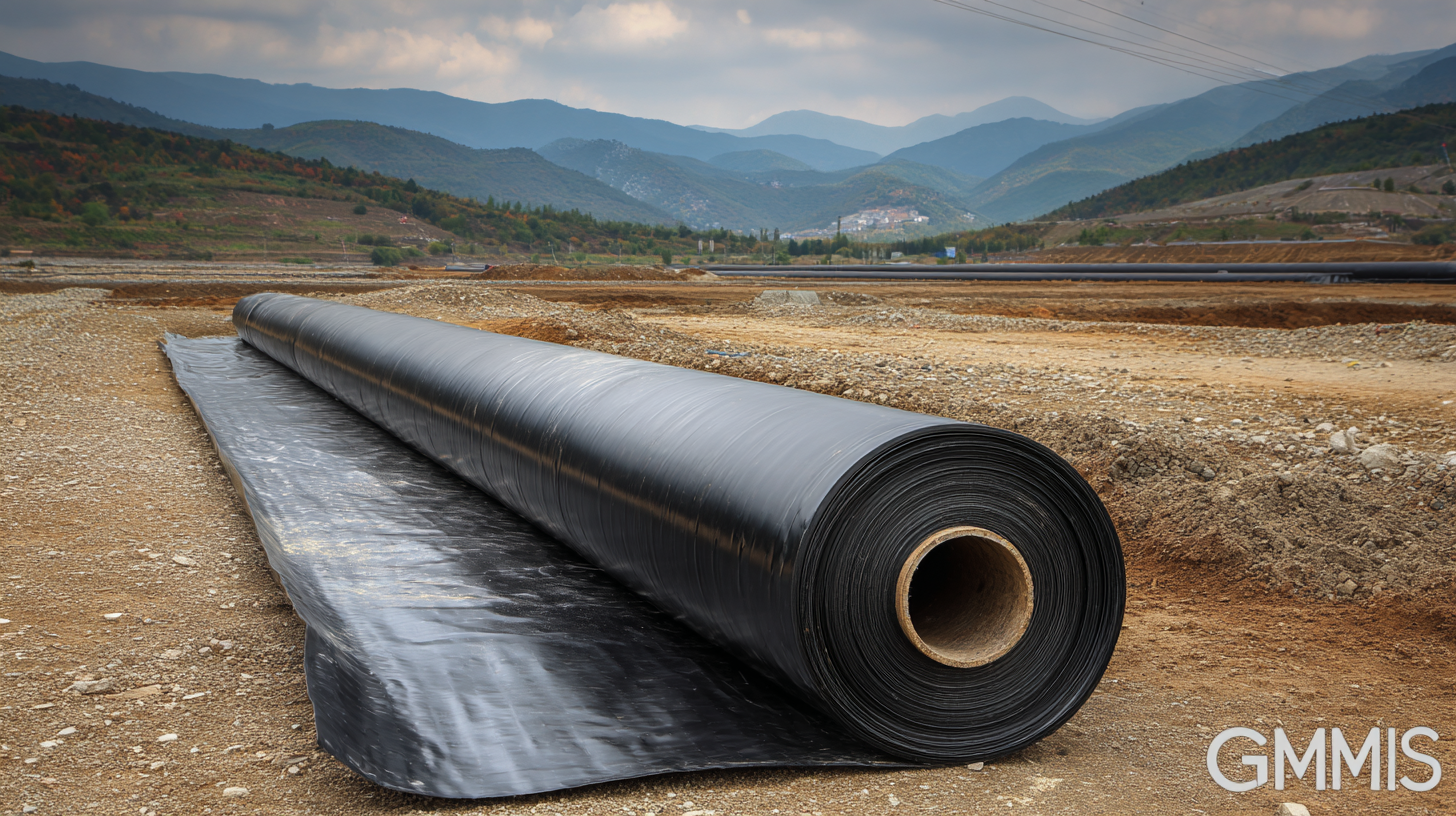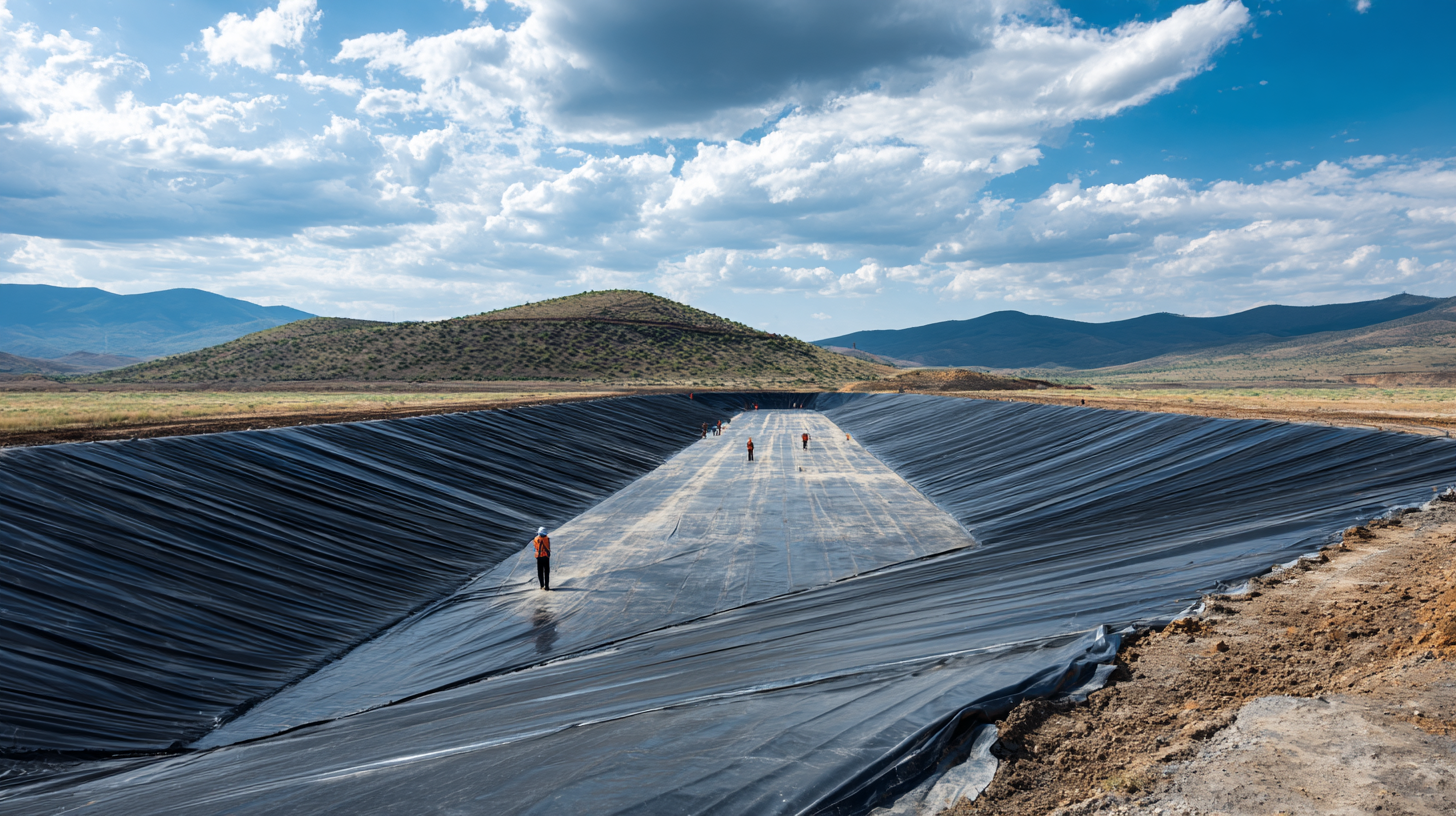Inquiry
Form loading...
- Phone
- E-mail
In an era where environmental sustainability and effective waste management are paramount, the use of Geomembrana In Hdpe (High-Density Polyethylene) has surged in popularity across various industries. These durable and versatile liners serve as crucial barriers in applications ranging from landfills and mining to water conservation and agricultural initiatives. The unique properties of HDPE, including its chemical resistance, UV stability, and flexibility, make it an ideal choice for creating reliable containment systems. As global procurement continues to adapt to the rising demand for sustainable solutions, understanding the benefits and applications of the leading geomembranes in HDPE is essential for industry professionals. This blog will explore the five best geomembranes available in the market today, shedding light on their specific advantages, uses, and the role they play in fostering an eco-friendly future.

High-density polyethylene (HDPE) geomembranes have become pivotal in various industries due to their unique properties, which facilitate effective global procurement. Their durability, resistance to environmental stressors, and low permeability make them ideal for applications such as waste containment, water management, and mining. As industries around the world increasingly prioritize sustainability and regulatory compliance, the demand for HDPE geomembranes is expected to witness substantial growth.

One of the key characteristics of HDPE geomembranes is their versatility in diverse environmental conditions. They can withstand extreme temperatures and chemical impacts, ensuring long-lasting performance in challenging settings. Furthermore, the ease of installation and maintenance associated with HDPE products enhances their appeal for global procurement initiatives. As procurement strategies evolve to focus on sustainability and eco-friendliness, HDPE geomembranes stand out as a reliable choice that aligns with these goals, enabling companies to meet their environmental commitments while optimizing operational efficiency.
When selecting HDPE geomembranes for global procurement, understanding essential technical specifications is crucial. High-density polyethylene (HDPE) geomembranes are widely recognized for their durability and impermeability, making them ideal for various applications, including landfills, irrigation, and pond liners. According to a report by Grand View Research, the global geomembrane market is projected to reach USD 3.6 billion by 2025, with a significant rise attributed to the increasing demand for environmental protection and waste management solutions.
Key technical specifications to consider include thickness, tensile strength, and elongation at break. For instance, HDPE geomembranes typically range from 0.5 mm to 2.5 mm in thickness, with a recommended minimum tensile strength of 20 MPa at 2% elongation, reflecting their ability to withstand environmental stresses. Additionally, the UV resistance of these materials is essential for outdoor applications; most high-quality HDPE geomembranes are designed to withstand UV exposure for up to 10 years without degradation. Understanding these specifications helps procurement specialists ensure they choose products that meet stringent performance and longevity criteria, thereby reducing maintenance and replacement costs in the long run.
| Geomembrane Type | Thickness (mm) | Tensile Strength (MPa) | Elongation at Break (%) | Hydraulic Conductivity (cm/sec) | Temperature Resistance (°C) |
|---|---|---|---|---|---|
| Standard HDPE | 1.0 | 24 | 700 | 1.0 x 10-13 | 60 |
| Reinforced HDPE | 1.5 | 30 | 800 | 1.0 x 10-14 | 70 |
| Textured HDPE | 1.2 | 26 | 750 | 1.0 x 10-12 | 65 |
| Colored HDPE | 1.0 | 22 | 720 | 1.0 x 10-13 | 60 |
| Smooth HDPE | 1.0 | 23 | 690 | 1.0 x 10-12 | 58 |
High-Density Polyethylene (HDPE) geomembranes have emerged as a preferred choice in various applications due to their remarkable durability and outstanding environmental resistance. According to a report by the Geosynthetic Materials Association (GMA), HDPE geomembranes can last over 50 years in service when properly installed. Their exceptional resistance to chemicals, UV radiation, and temperature fluctuations makes them ideal for landfill liners, tailings ponds, and water conservation projects. This durability not only ensures long-term performance but also minimizes maintenance costs and environmental impact, making HDPE a wise investment for global procurement.

When selecting HDPE geomembranes, it is essential to consider the material's puncture resistance and tensile strength. Research indicates that top-quality HDPE geomembranes can exhibit tensile strengths exceeding 30 MPa. Additionally, ensure that the product is certified to meet industry standards such as ASTM D6683 for quality assurance.
Tip: Always consult with manufacturers about the specific application and environmental conditions to choose the most suitable thickness and type of HDPE geomembrane. Additionally, staying updated with advancements in HDPE formulations can lead to improved performance characteristics.
Tip: Implement regular inspections and maintenance protocols to monitor the integrity of the geomembranes, which can significantly extend their lifespan and effectiveness.
When it comes to the installation of HDPE geomembranes, adherence to best practices is crucial for ensuring durability and effectiveness in application. According to the Geosynthetic Institute, improper installation can lead to significant failures and costly repairs, with data indicating that up to 30% of these failures are due to poor workmanship. Ensuring that the site is properly prepared, maintaining consistent compaction, and employing qualified personnel are foundational elements of a successful installation.
**Tips:** Always conduct a thorough site assessment before installation. This includes identifying potential environmental factors, such as moisture content and soil stability, that could impact the geomembrane's performance. Ensuring that all seams are adequately tested for integrity can prevent future leaks or punctures, ultimately enhancing the geomembrane’s lifespan.
Another essential practice involves ensuring a proper overlap during installation. The International Geosynthetics Society recommends a minimum of 12 inches of overlap for seams, which not only reinforces the integrity of the installation but also enhances resistance to environmental stresses. Regular monitoring and maintenance post-installation will further ensure that the geomembrane continues to serve its intended function effectively.
**Tips:** Incorporate regular inspections into your project timeline to ensure that any issues are detected early. Training staff on the specific characteristics of HDPE can result in a more efficient installation process, reducing the risk of human error.
In today's competitive market, understanding the leading brands of HDPE geomembranes is crucial for global procurement strategies. The geomembrane market has seen significant growth, estimated at USD 1.98 billion in 2023 and projected to expand at a compound annual growth rate (CAGR) of 5.4% through 2030. With the increasing demand for robust solutions in various applications such as waste management and water containment, companies must prioritize their choices in geomembrane materials.
A comparative analysis of HDPE geomembrane brands reveals distinct advantages and diverse product offerings across different manufacturers. The global PE geomembrane market is expected to reach $2.3 billion by 2026, propelled by innovations and advancements in geosynthetic materials. As major players focus on enhancing their product lines to meet sustainable practices and regulatory standards, evaluating these brands helps procurement professionals make informed decisions that align with environmental goals while ensuring durability and performance in challenging conditions.
This chart presents the tensile strength and elongation at break percentages of five different HDPE geomembranes. The data indicates the performance characteristics which are crucial for global procurement decisions.
